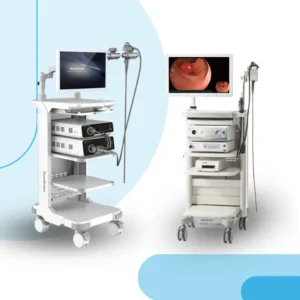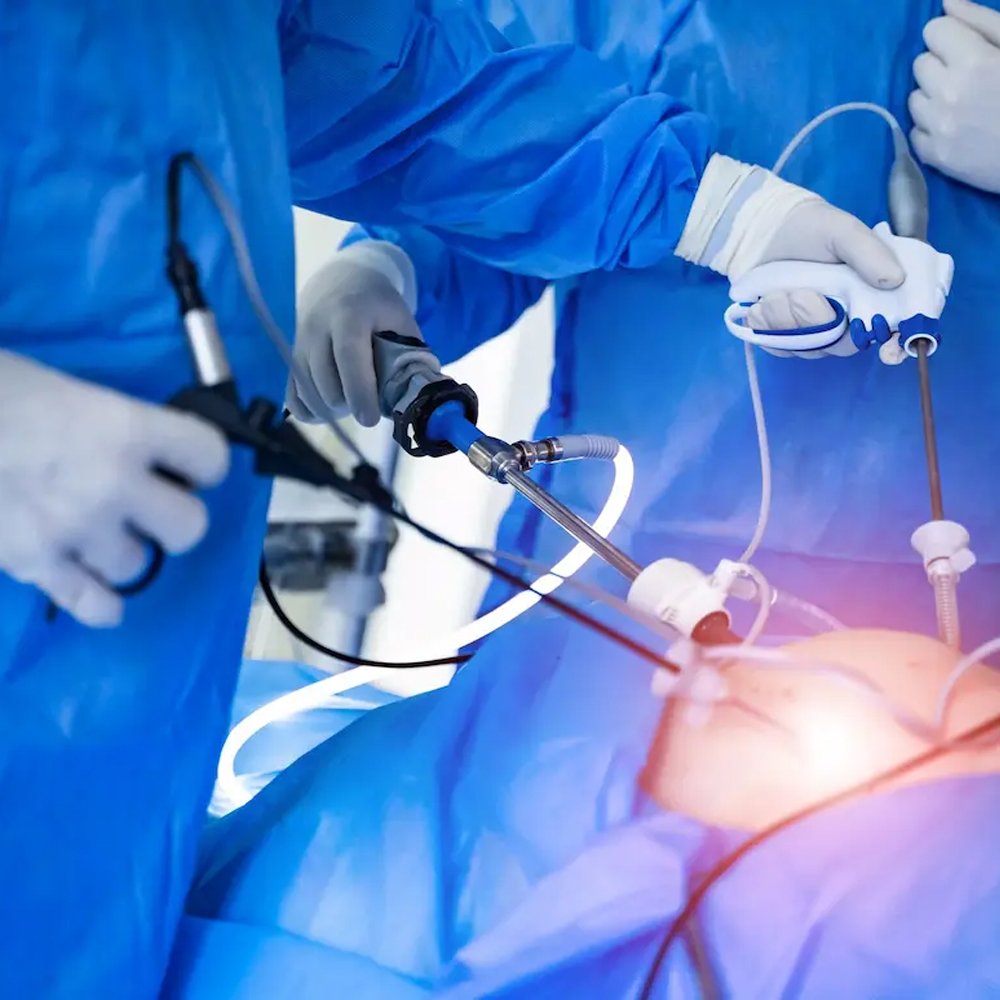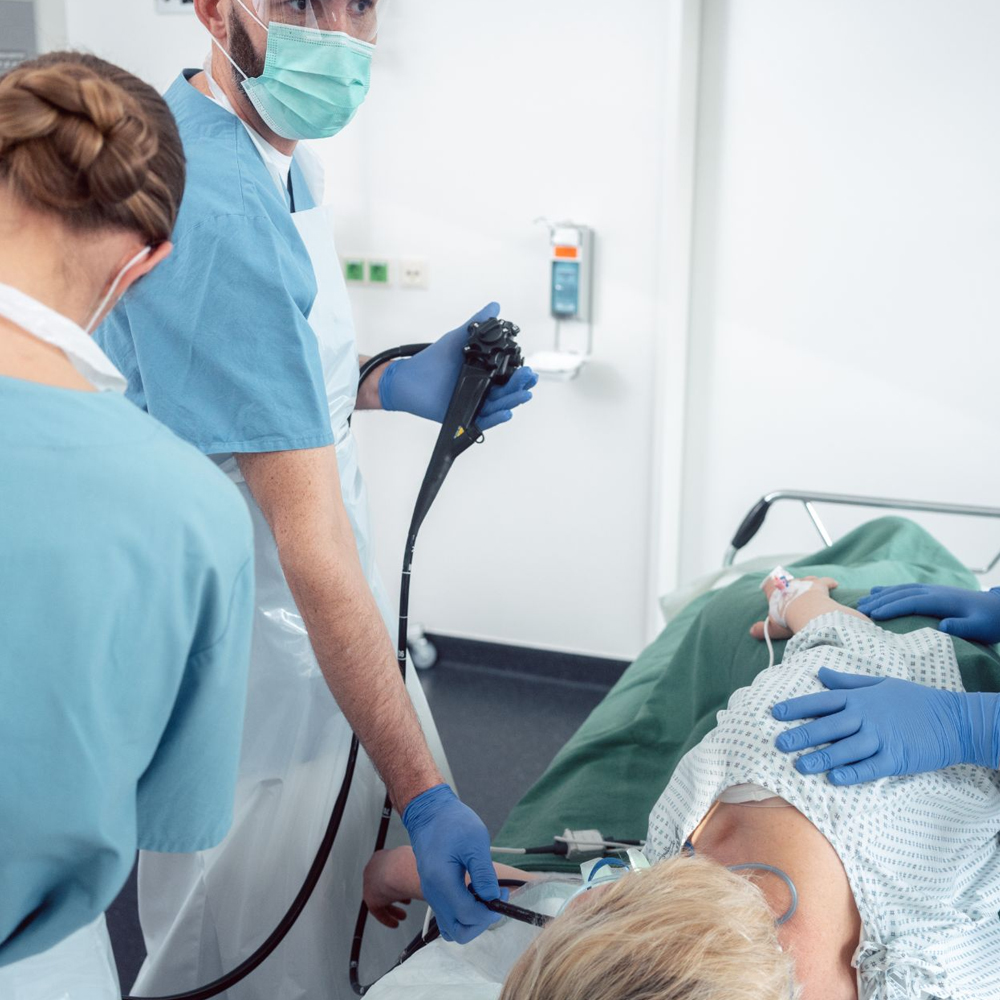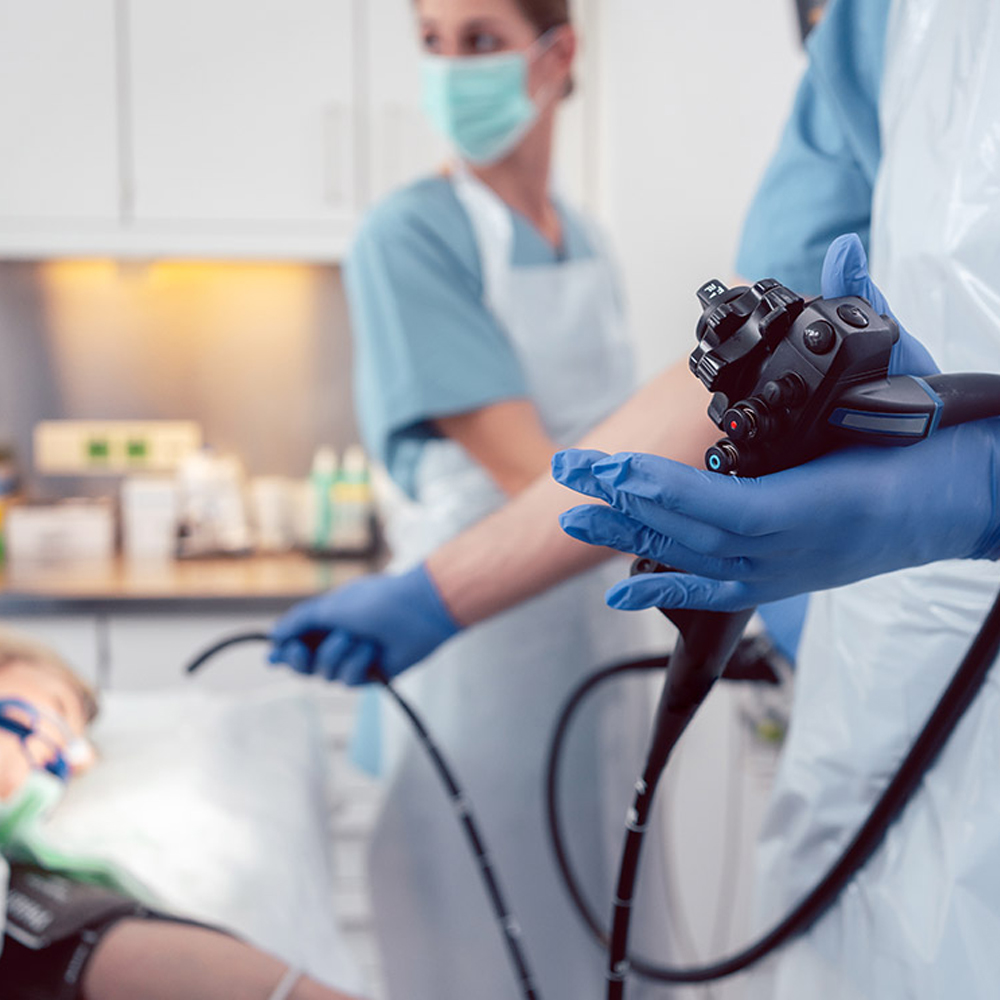Burtom ‣ Technologies ‣ Endoscopy – Gastroscopy – Colonoscopy
Language: 🇬🇧 English | 🇹🇷 Türkçe
Endoscopy – Gastroscopy – Colonoscopy Overview

 Endoscopy, encompassing procedures such as gastroscopy and colonoscopy, represents a cornerstone in modern medicine, particularly in the field of gastroenterology. This minimally invasive technique involves the insertion of a flexible endoscope, equipped with a light and camera, into the gastrointestinal tract to obtain detailed visualizations of the mucosal lining, enabling clinicians to assess for abnormalities, diagnose various gastrointestinal conditions, and even perform therapeutic interventions. Gastroscopy, specifically, involves the passage of an endoscope through the mouth and esophagus to examine the upper gastrointestinal tract, including the esophagus, stomach, and duodenum, allowing for the detection of conditions such as ulcers, inflammation, and tumors. Conversely, colonoscopy entails the advancement of the endoscope through the rectum and colon, facilitating a comprehensive evaluation of the large intestine to identify polyps, tumors, and signs of inflammation or infection. These procedures are instrumental in the early detection and management of gastrointestinal disorders, providing invaluable insights that guide treatment decisions, improve patient outcomes, and contribute to overall gastrointestinal health.
Endoscopy, encompassing procedures such as gastroscopy and colonoscopy, represents a cornerstone in modern medicine, particularly in the field of gastroenterology. This minimally invasive technique involves the insertion of a flexible endoscope, equipped with a light and camera, into the gastrointestinal tract to obtain detailed visualizations of the mucosal lining, enabling clinicians to assess for abnormalities, diagnose various gastrointestinal conditions, and even perform therapeutic interventions. Gastroscopy, specifically, involves the passage of an endoscope through the mouth and esophagus to examine the upper gastrointestinal tract, including the esophagus, stomach, and duodenum, allowing for the detection of conditions such as ulcers, inflammation, and tumors. Conversely, colonoscopy entails the advancement of the endoscope through the rectum and colon, facilitating a comprehensive evaluation of the large intestine to identify polyps, tumors, and signs of inflammation or infection. These procedures are instrumental in the early detection and management of gastrointestinal disorders, providing invaluable insights that guide treatment decisions, improve patient outcomes, and contribute to overall gastrointestinal health.
Endoscopy: Definition and Basic Principles

Endoscopy, derived from the Greek words “endo” meaning within and “skopein” meaning to look, is a medical procedure that involves the examination of the interior of the body using an endoscope, a flexible tube with a light and camera attached to it. This procedure allows doctors to visualize internal organs and structures without the need for invasive surgery. The basic principle of endoscopy revolves around the insertion of the endoscope through natural openings or small incisions in the body to obtain visual images of the gastrointestinal tract, respiratory system, urinary tract, or other internal areas for diagnostic or therapeutic purposes.
Gastroscopy (Upper Gastrointestinal Endoscopy)
Gastroscopy, also known as upper gastrointestinal endoscopy, is a medical procedure used to examine the upper gastrointestinal tract, which includes the esophagus, stomach, and the first part of the small intestine (duodenum). During a gastroscopy, a thin, flexible tube with a camera and light at the tip, called an endoscope, is inserted through the mouth and guided down the throat into the upper gastrointestinal tract. This allows the doctor to visually inspect the lining of these organs and identify any abnormalities, such as inflammation, ulcers, tumors, or bleeding. Gastroscopy is commonly performed to diagnose and treat various conditions, including gastroesophageal reflux disease (GERD), peptic ulcers, gastritis, and gastrointestinal bleeding. It is a valuable diagnostic tool that provides real-time images, allowing for accurate diagnosis and treatment planning. Additionally, biopsies can be taken during the procedure for further analysis and to confirm certain diagnoses. Overall, gastroscopy is a safe and effective procedure that plays a crucial role in the diagnosis and management of gastrointestinal disorders.
Colonoscopy (Lower Gastrointestinal Endoscopy)
Colonoscopy, also known as lower gastrointestinal endoscopy, is a medical procedure used to examine the lining of the large intestine (colon) and the rectum. During a colonoscopy, a long, flexible tube with a camera and light at the tip, called a colonoscope, is inserted through the anus and guided through the rectum and into the colon. This allows the doctor to visually inspect the colon and rectum for any abnormalities, such as inflammation, polyps, tumors, or bleeding. Colonoscopy is commonly performed to screen for colorectal cancer and to investigate symptoms such as changes in bowel habits, rectal bleeding, or unexplained abdominal pain. It is a valuable diagnostic tool that provides real-time images, allowing for accurate diagnosis and treatment planning. Additionally, during the procedure, polyps can be removed and biopsies can be taken for further analysis. Colonoscopy is considered a safe and effective procedure when performed by a trained healthcare professional and plays a crucial role in the early detection and prevention of colorectal cancer.
Endoscopic Examination Procedure and Patient Preparation: Before an endoscopic examination, patients are typically instructed to fast for a certain period, usually overnight, to ensure the stomach and intestines are empty for better visualization. Depending on the type of endoscopy, patients may need to stop taking certain medications or adjust their diet. Upon arrival at the medical facility, patients are briefed on the procedure, potential risks, and asked to sign a consent form. They are then prepared for the examination, which may involve changing into a hospital gown and removing jewelry or accessories that could interfere with the procedure.
Patient Preparation and Instructions: Patients undergoing endoscopy are provided with detailed instructions regarding fasting, medication adjustments, and any specific preparations required for the procedure. They are typically advised to inform their healthcare provider about any allergies, medical conditions, or medications they are taking. Patients are instructed to arrange for transportation home after the procedure, as they may still feel drowsy or groggy from sedation.
Post-Endoscopic Examination Follow-Up and Recovery Process: After the endoscopic examination, patients are monitored in a recovery area until the effects of sedation wear off and they are deemed fit for discharge. Depending on the type of sedation used, patients may experience drowsiness, bloating, or a sore throat. It is common for patients to be observed for any signs of complications such as bleeding, perforation, or adverse reactions to sedation. Patients are provided with post-procedure instructions, which may include dietary restrictions, activity limitations, and when to resume medications. They are also informed about when to contact their healthcare provider if they experience any unusual symptoms or complications following the procedure.
Advantages and Benefits of Endoscopic Examination: Endoscopic examinations offer numerous advantages over traditional diagnostic methods, including the ability to visualize internal organs and tissues directly, leading to more accurate diagnoses. These procedures are minimally invasive, typically performed on an outpatient basis, and involve shorter recovery times compared to surgical alternatives. Endoscopic examinations also allow for targeted biopsies, therapeutic interventions, and real-time visualization of abnormalities, facilitating immediate treatment planning.
Evaluation and Interpretation of Endoscopic Results: Following an endoscopic examination, the obtained images and findings are meticulously evaluated and interpreted by trained healthcare professionals, typically gastroenterologists or surgeons specializing in endoscopy. The results are analyzed to identify any abnormalities, such as inflammation, ulcers, tumors, or bleeding, and to assess the overall health of the examined organs. Interpretation of endoscopic results requires a thorough understanding of anatomy, pathology, and endoscopic techniques to ensure accurate diagnoses and appropriate management plans.
Patient Rights and Information About Endoscopic Examination: Patients undergoing endoscopic examinations have the right to receive comprehensive information about the procedure, including its purpose, risks, benefits, and alternatives. Informed consent must be obtained before the procedure, ensuring that patients understand the nature of the examination, potential complications, and post-procedure care instructions. Patients also have the right to privacy, confidentiality of their medical information, and to ask questions or express concerns about the procedure. Healthcare providers are responsible for addressing patient inquiries, providing clear explanations, and ensuring that patients feel comfortable and informed throughout the endoscopic examination process.
Privacy and Data Protection: With the increasing use of digital technologies in endoscopic examinations, ensuring patient privacy and data protection is paramount. Healthcare providers must adhere to strict protocols and regulations to safeguard patient information collected during endoscopic procedures. This includes secure storage, transmission, and access control measures to prevent unauthorized disclosure or misuse of sensitive data. Patient consent for data sharing and privacy policies must be clearly communicated and respected throughout the endoscopic examination process to maintain patient trust and confidentiality.
Future Directions and Developments in Endoscopic Examination: The field of endoscopic examination continues to evolve rapidly, driven by advancements in technology, imaging modalities, and procedural techniques. Future directions in endoscopy include the integration of artificial intelligence (AI) and machine learning algorithms to enhance diagnostic accuracy and streamline workflow. Miniaturization of endoscopic devices and the development of robotic-assisted platforms offer the potential for more precise and minimally invasive procedures. Furthermore, research efforts focus on expanding the capabilities of endoscopic imaging, such as molecular imaging and functional endoscopy, to improve disease detection and treatment monitoring.
Technological Advancements and Innovations in Endoscopy: Recent technological advancements have revolutionized the field of endoscopy, enabling clinicians to perform more complex procedures with greater precision and safety. Innovations such as high-definition imaging, narrow-band imaging, and virtual chromoendoscopy enhance visualization of mucosal surfaces and aid in lesion detection. Additionally, advanced endoscopic imaging techniques, such as confocal laser endomicroscopy and optical coherence tomography, provide real-time microscopic visualization of tissue architecture and cellular morphology, facilitating early diagnosis of gastrointestinal diseases.
Future Perspectives in Endoscopic Examination Procedure: Looking ahead, endoscopic examination procedures are poised to become even more patient-centered, efficient, and personalized. Advances in endoscopic imaging, coupled with AI-driven analytics, will enable risk stratification, personalized treatment planning, and prognostic assessment tailored to individual patient needs. Furthermore, the integration of telemedicine and remote monitoring capabilities will expand access to endoscopic services, particularly in underserved areas. Continued collaboration between clinicians, engineers, and researchers will drive innovation in endoscopic technologies, ultimately improving patient outcomes and advancing the field of gastrointestinal endoscopy.
Frequently Asked Questions

Get a Free Second Opinion

I consent to Burtom Health Group using my aforesaid personal data for the purposes described in this notice and understand that I can withdraw my consent at any time by sending a request to info@burtom.com.









